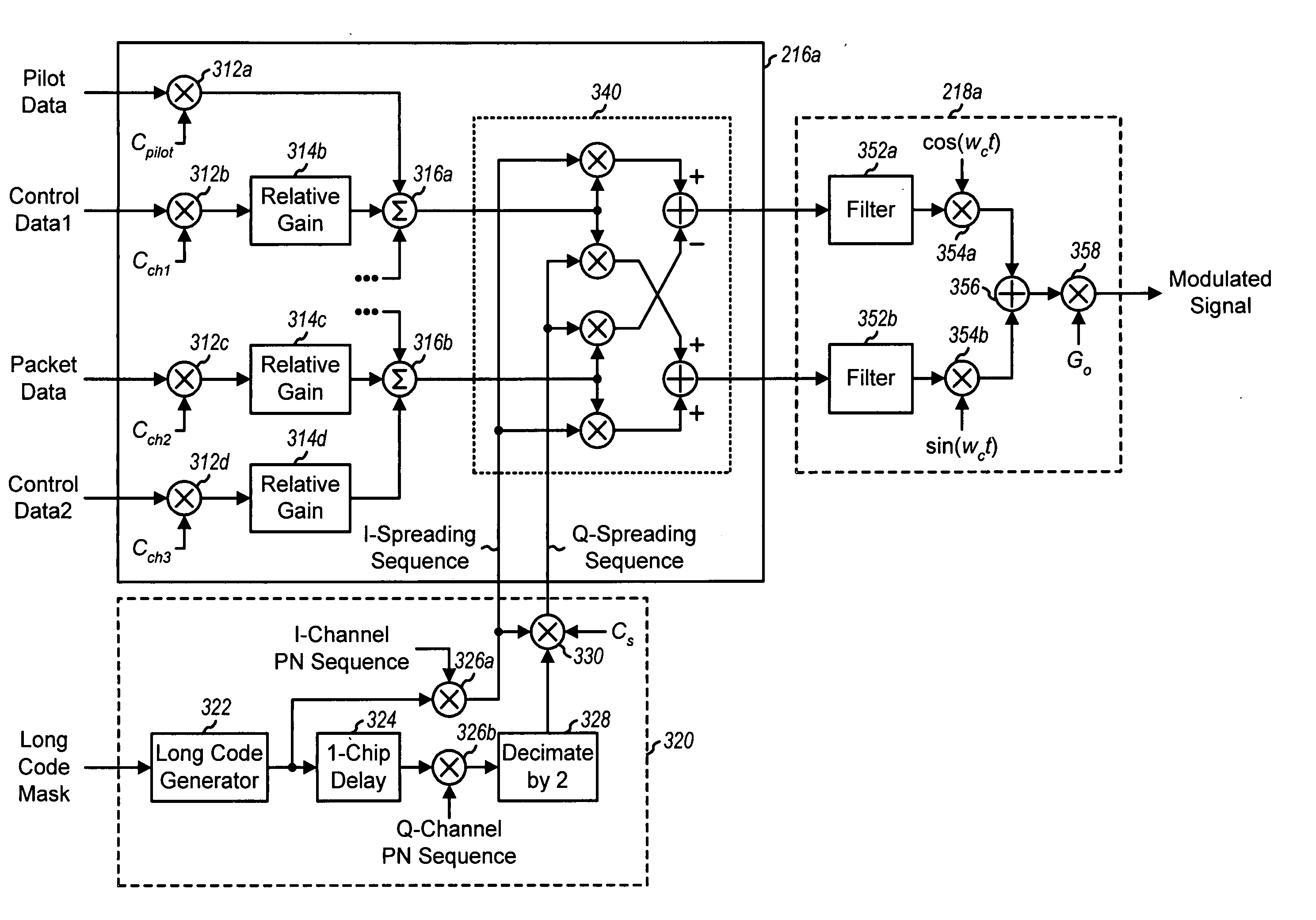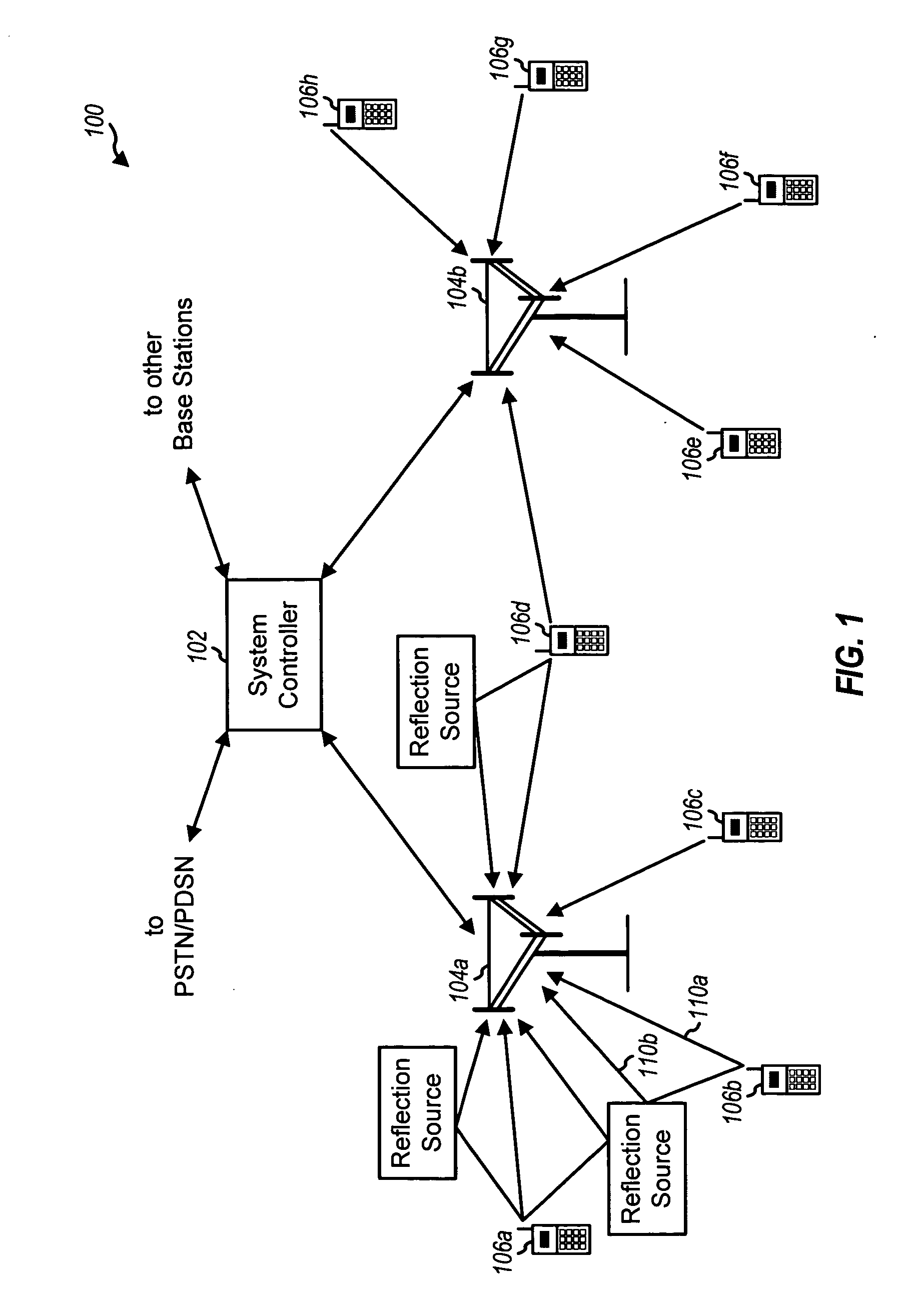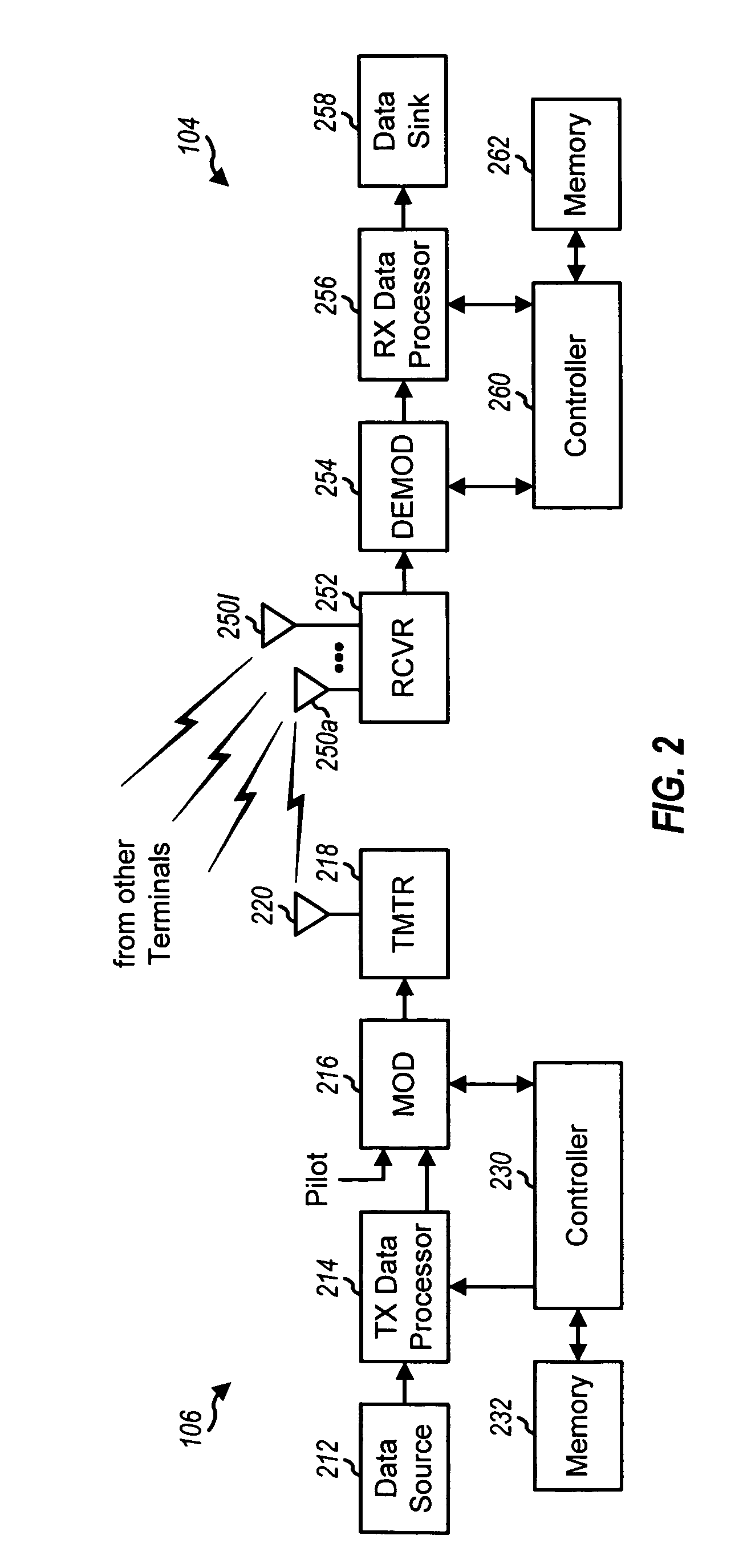Method and apparatus for canceling pilot interference in a wireless communication system
- Summary
- Abstract
- Description
- Claims
- Application Information
AI Technical Summary
Benefits of technology
Problems solved by technology
Method used
Image
Examples
Embodiment Construction
A signal transmitted from a terminal may reach a base station via one or multiple signal paths. These signal paths may include a straight path (e.g., signal path 110a) and reflected paths (e.g., signal path 110b). A reflected path is created when the transmitted signal is reflected off a reflection source and arrives at the base station via a different path than the line-of-sight path. The reflection sources are typically artifacts in the environment in which the terminal is operating (e.g., buildings, trees, or some other structures). The signal received by each antenna at the base station may thus comprise a number of signal instances (or multipaths) from one or more terminals.
In system 100, a system controller 102 (which is also often referred to as a base station controller (BSC)) couples to base stations 104, provides coordination and control for the base stations coupled to it, and further controls the routing of calls to terminals 106 via the coupled base stations. System co...
PUM
 Login to View More
Login to View More Abstract
Description
Claims
Application Information
 Login to View More
Login to View More - R&D
- Intellectual Property
- Life Sciences
- Materials
- Tech Scout
- Unparalleled Data Quality
- Higher Quality Content
- 60% Fewer Hallucinations
Browse by: Latest US Patents, China's latest patents, Technical Efficacy Thesaurus, Application Domain, Technology Topic, Popular Technical Reports.
© 2025 PatSnap. All rights reserved.Legal|Privacy policy|Modern Slavery Act Transparency Statement|Sitemap|About US| Contact US: help@patsnap.com



